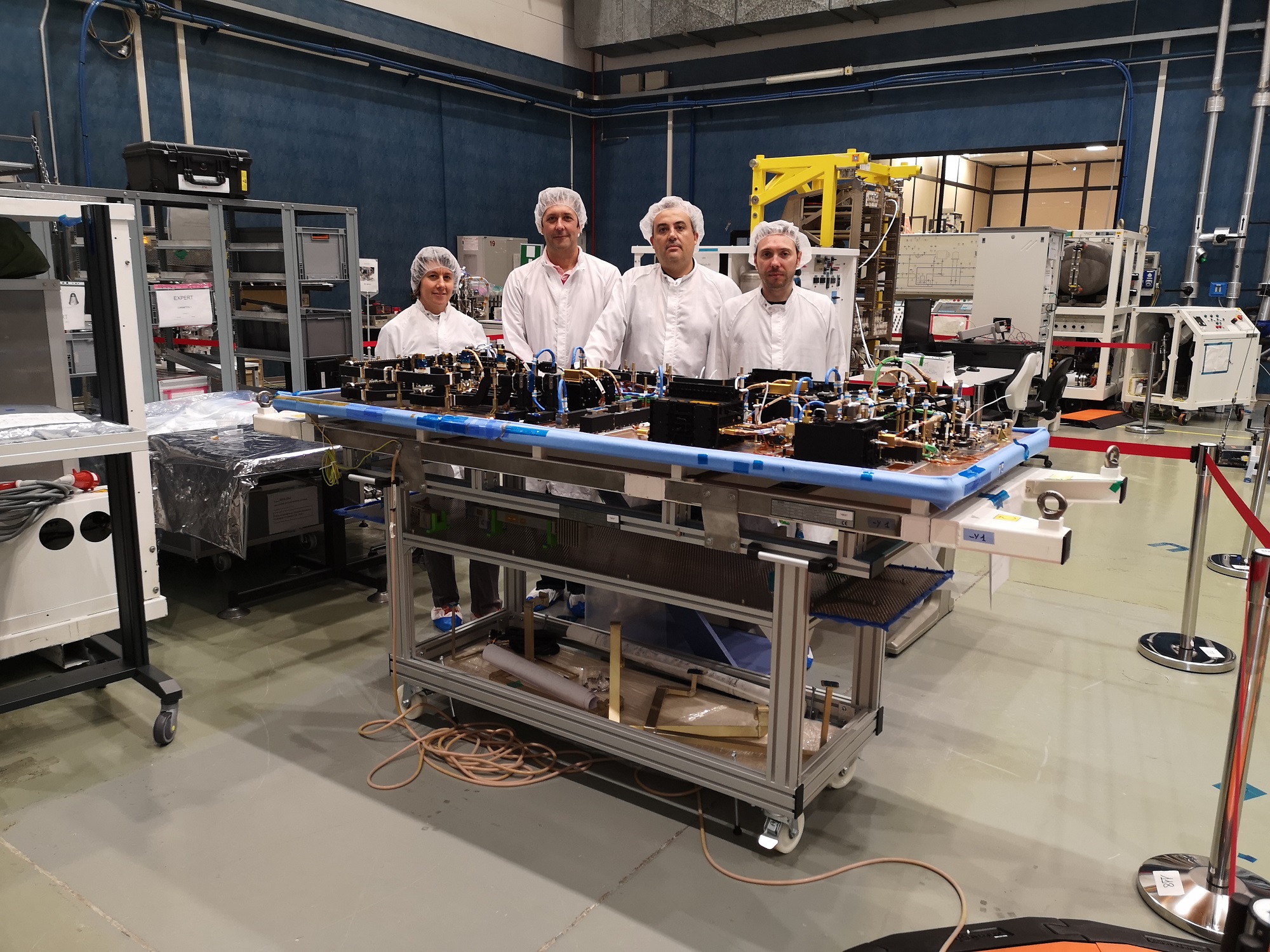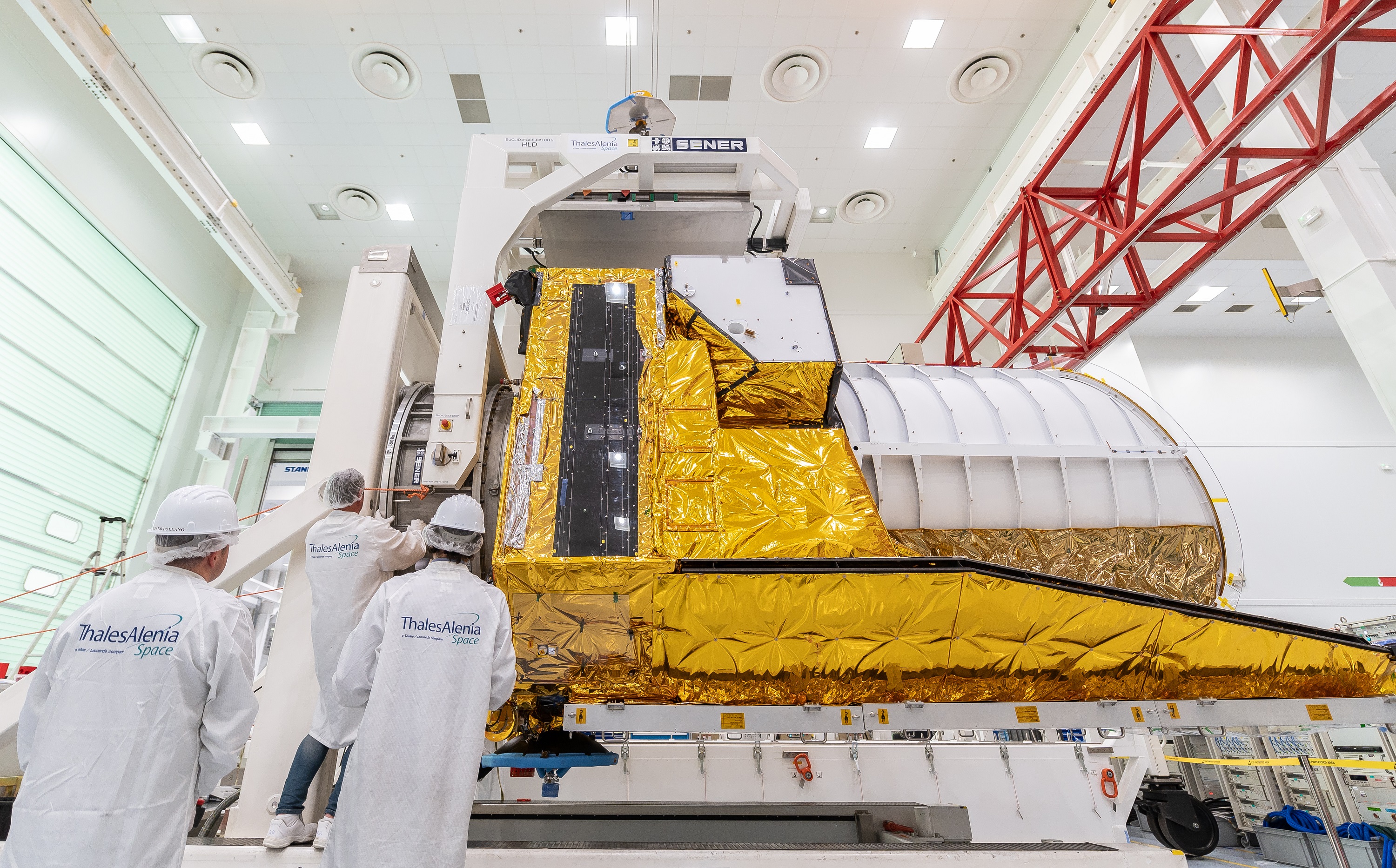The Euclid satellite has made it safely to the launch site at Cape Canaveral and is now getting ready for its exciting launch. Can you believe that soon it’ll be traveling through deep space and still able to communicate with us here on Earth? This groundbreaking mission is equipped with cutting-edge technologies to study the mysteries of dark energy and dark matter, but its success also heavily relies on a highly sophisticated and reliable communication system which is a vital component of the satellite, designed to send and receive data between the satellite and Earth.
Today, we have the pleasure of speaking with two members of the team who played key roles in the development of Euclid’s communication system.

© Thales Alenia Space
Susana Infante is the project manager in Madrid and coordinator of the international team responsible for the spacecraft’s communication system. Her role was to ensure the system was designed and developed to the European Space Agency’s expected performance standards.
Raffaele Trento is the project manager for the Antenna Department in Rome. He led the team in overseeing the design and development of the flight model for the High-Gain Antenna, part of the TT&C subsystem.
They share their experiences and insights on the critical role of communication systems in space exploration and the challenges they faced during development.
Susana: What was the most challenging aspect of the communication system for Euclid?
Euclid is personally and professionally a really inspiring mission. From a professional standpoint, the program is quite complex, so it was challenging to ensure that all subsystems met the strict standards while staying on time and on budget. Beyond that, Euclid involves people from a lot of different countries in Europe. To coordinate, exchange and work daily in a team spanning different cultures can sometimes be a challenge, but through trust and cooperation we were able to create a collaborative and enriching work environment to reach our ultimate goal together.
Raffaele: What were the main challenges you faced during design, construction and testing for Euclid’s antenna?
My main concern was the integration of the first engineering qualification model (EQM). Thales Alenia Space in Rome was responsible for the overall design and assembly of the antenna, while the main components were manufactured through a complex EU industrial organization. Once we received all the parts, we had to assemble them and verify that everything worked well and met performance standards. This process was difficult and challenging, but we were ultimately successful in qualifying the antenna.

© Thales Alenia Space
Communication with the satellite is critical. The antenna and communication system play a key role in space science missions. Susana, how does communication between Euclid and ground stations affect the quality of the data collected during the mission?
For the mission to succeed, Euclid will have to remain in continuous contact with Earth. To do that, the antenna and other subsystems must work flawlessly. This is crucial, especially since Euclid will be located in orbit around the L2 Sun-Earth Lagrange point, 1.5 million kilometers from Earth.
In space missions like this, high-speed communication is a tough challenge, especially since the instruments on board generate massive amounts of data. To handle this, satellite designers are exploring new communication bands like K band to improve performance. In fact, during Euclid’s six-year mission it will produce 150,000 high-definition images, which amounts to almost a petabyte of compressed data to be downlinked using the K band system.

© Thales Alenia Space
What does this mission mean to you? Would you like to send a personal message of good luck to the satellite for its launch campaign?
Susana: Euclid is definitely one of the most challenging and thrilling projects I’ve worked on. Knowing that our Spanish team is part of a scientific mission that could rewrite the history of cosmology makes me proud.
Once you’ve reached orbit, send us images that will make the world dream and help us unveil the secrets of the universe... We’re counting on you, so good luck for the trip in July! And good luck to the whole team for a successful launch.
Raffaele: The Euclid mission is making its final steps here on Earth, and all the team members are eagerly awaiting its launch next July. These space science missions are never easy and no aspect or operation should be taken for granted. We hope to advance our understanding of the universe’s origins and satisfy our thirst for knowledge.
Best of luck to the Euclid mission as it embarks on uncovering the mysteries of our universe!
About the Euclid mission

© Thales Alenia Space/Imag[IN]
By examining billions of galaxies up to 10 billion light-years away, and covering more than a third of the sky, Euclid is a European Space Agency mission set to unlock a wealth of knowledge that will shape our understanding of the cosmos. Scheduled for launch in July, this one-of-a-kind satellite will study the Universe’s dark matter and dark energy. Fair wind to our beloved satellite!


